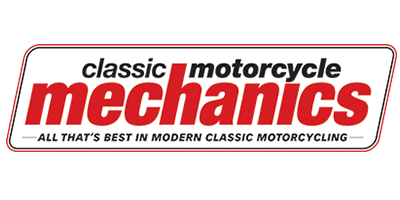Ebay, and other such sites, are full of “classic motorcycles” but are they usually investment grade classic motorcycles? In my experience, no. I have not bought or sold a classic motorcycle from any such internet site, worthy of taking up space in my personal collection, in about two or three years. There are some very pretty machines, which ride beautifully on such sites, but they are not investment grade classic motorcycles.
Assuming that you want to invest in emerging market classic motorcycles. After all, classic motorcycles are not just fun, but they are the best kept tax-free investment secret. Not only are all profits tax free, but they also produce far higher yields than almost any other asset. But you have to do your due diligence and The Motorcycle Broker offers this service for clients, so they know that they have an investment grade classic motorcycle.
The time to do due diligence is before you buy your classic motorcycle, not after. You wouldn’t buy an old house without a survey, or a company without investigating and confirming the accounts, would you? So let’s just look at some of the main issues, and there are more, which need clarification. These are just some of them-
- Is the make and model of classic motorcycle you like, an investment grade make and model to start with?
- Is the motorcycle authentic?
- Are the engine and chassis numbers correct?
- Is the motorcycle what the owner claims it to be?
- When new, was the motorcycle destined for a full horsepower market?
- Is the motorcycle a desirable model?
- Is the motorcycle the most desirable colour?
- Is the motorcycle the correct colour?
- Are the components correct, or are they pattern, or replica parts?
- Has the motorcycle been restored, or is it original?
- If the motorcycle has been restored, was it done sympathetically with respect to the original finish?
1 Is the make and model of motorcycle you like, an investment grade make and model to start with?
A customer told me they wanted a Kawasaki Z900, so I asked them which one. They did not know what I was on about. So I explained that Kawasaki made numerous versions of the Z900 and that a Z1 900 will cost 50% more than a Z900A5. The reasons for this are explained further in this article article.
If you want a trail Honda 125, then you will pay very little for a Honda XL125, but about four or five times as much for a Honda TL125, but it is still a Honda 125 trail bike. A Ducati 916 SP is four or five times the price of a 916 Strada, but a Strada is still a Ducati 916.
2 Is the motorcycle authentic?
Many motorcycles are just not what they appear to be. There are numerous Ducati 916 SPs which are Stradas that have had parts from crashed SPs added. There are numerous Honda CB750 Phil Read Replicas around, but only thirty-five of the original one hundred and fifty, made by Honda Britain, left. There are vast swathes of great looking classic motorcycles, which are just not what they claim to be.
3 Are the engine and chassis numbers correct?
Some motorcycles left the factory with matching engine and chassis numbers. Others left the factory with chassis and engine numbers which differ, but that are within a range. How many motorcycles, during their thirty-year life, have had another engine fitted from the breakers yard? Like classic cars, more have had a different engine fitted to the one that was fitted by the factory, than those that still have the original engine.
4 Is the motorcycle what the owner claims it to be?
In the 1990s I was asked to look at some MV Agustas, one of which was claimed to be the 1956 world championship winning 500cc four-cylinder motorcycle. Along with another classic motorcycle expert, we perused the machine and it looked and felt incredible. It oozed history, provenance and felt like the championship winning motorcycle. I cannot say what our verdict was, as I do not publicise the results of clients’ reports, but the client required our services to verify the provenance. Is the Harley-Davidson Pan Head you’re looking at in Barking, really the missing classic motorcycle once owned by Elvis Presley? If it is, then it is worth a great deal more than a standard Pan Head.
5 When new, was the motorcycle destined for a full horsepower market? The Swiss and French markets have restricted power motorcycles, as low as 85 horsepower. Even if the machines are later de-restricted, then motorcycles destined for these markets are quite toxic as investment motorcycles. No one wants a 106 horsepower Ducati Desmosedici and neither do they want something that’s been tampered with to de-restrict it after being in a 106 horsepower market. So investors leave these well alone and leave them to people to de-restrict and rag around a race circuit. There is too much risk involved and Swiss motorcycles can be almost impossible to de-restrict. The entire subject is just too toxic so investors steer well clear. You can read more about this issue here.
6 Is the motorcycle a desirable model?
A first year of production of Honda’s CB500 twin is never going to be a classic motorcycle. A Suzuki GN125 will never be a classic motorcycle. However, even the ugly “plastic maggot” Honda CX500, ruined by numerous couriers in the 1980s, is becoming collectible. A Yamaha XT500 is collectible, yet a Honda FT500 is not that valuable. There are reasons for this, which I will go into in future articles.
7 Is the motorcycle the most desirable colour?
There are some motorcycles, which are remembered with affection and only the one colour, of the three or four available, elicits the misty eyed feeling evoked by nostalgia. A first year of production of Suzuki’s GSXR750 or GSXR1100 can only be in factory blue and white. Not red and black, which can look good, but are just not so sought after as the blue and white models. A Ducati 996 SPS has to be red, not yellow, for an investment grade collectors’ piece. Although some collectors may like the yellow model, it will always be much harder to sell and the price will need to reflect this. A 1990 Harley-Davidson Fatboy would have to be the silver one. Collectors go for those specific colours and having that correct colour will make your classic motorcycle so much easier to sell. It will also sell at the top end of the price scale.
8 Is the motorcycle the correct colour?
So you bought your red 996SPS Ducati, but was it originally red when it left the factory? Is your beautiful red Ducati really a yellow one with red body panels, or was it re-sprayed? Was it originally red? These Ducatis are the Brough Superiors of the future and you can be sure that if you decide to sell yours, in ten years time probably for six figures, the buyer will be employing the services of an expert to find out what colour your Ducati was when it left the factory. In ten years time, the original colour will be far more critical than it is today, so you need to know your machine is original in colour.
9 Are the components correct, or are they pattern, or replica parts?
Many restored Honda CB750K0s are stunning. They look original, ooze appeal and look just like they did the day they left the factory. However numerous important and unobtainable parts are replica or pattern parts. That, in it self, does not mean that it’s not an investment grade motorcycle, depending on which components are replica or pattern. But the price must reflect this.
Conversely, I have had to walk away from an “expert” who looked over a CB750K0 I was selling. He told me how the seat cover was pattern, when the vinyl on the seat was the original and has been unavailable for over thirty years. He believed that the fastenings were stainless, when they were the original zinc plated ones with the number 8 stamped on them. He even tried to tell me that CB750K0s came with allen key heads, not dull philips screws to hold the engine cases together.
I have been asked to write reports on classic motorcycles and discovered that, apart from the engine, frame, forks and wheel hubs, just about every part was pattern. Hardly a 100% original motorcycle, as claimed by the owner, although the motorcycle did look excellent. But classic motorcycles like these, although attractive, are not investment grade motorcycles.
Some pattern, or replica, parts can be acceptable. The BMW R32 for sale on this site has had replica mudguards made from scratch to the original specification. If the parts don’t exist, they don’t exist. It’s all about balance and whether the motorcycle is genuine enough to be of an investment grade. Also, it depends on which pattern or replica parts are used. Every classic motorcycle is unique.
10 Has the motorcycle been restored, or is it original?
I will go into this in part 2 of this article to follow, as this is a an important point, about which you need to be sure when looking for an investment grade classic motorcycle.
11 If the motorcycle has been restored, was it done sympathetically with respect to the original finish?
See the point above.
So as you can see there are beautiful classic motorcycles which are fun to ride, beautiful to look at and great to own. But, although they may rise in value off the back of the genuine article, they are not investment grade motorcycles. They can be wonderful to own but they will never appreciate in the same way, hold their value in times of financial crisis and will be far harder to sell than an investment grade classic motorcycle.
People own classic motorcycles for numerous reasons and they are all valid to that individual. But if you do have an intention towards alternative investment, wealth protection and tax-free profits, outstripping most financial sectors, then an investment grade classic motorcycle is the only route if those are your motives. But the key is always to buy the classic motorcycle that you genuinely like, take good advice and follow your passion.
- Most collectible Ducati 916 SP - June 20, 2024
- Classic Motorcycles: To ride or not to ride? - June 17, 2024
- Classic Motorcycles: To ride or not to ride? - June 17, 2024







